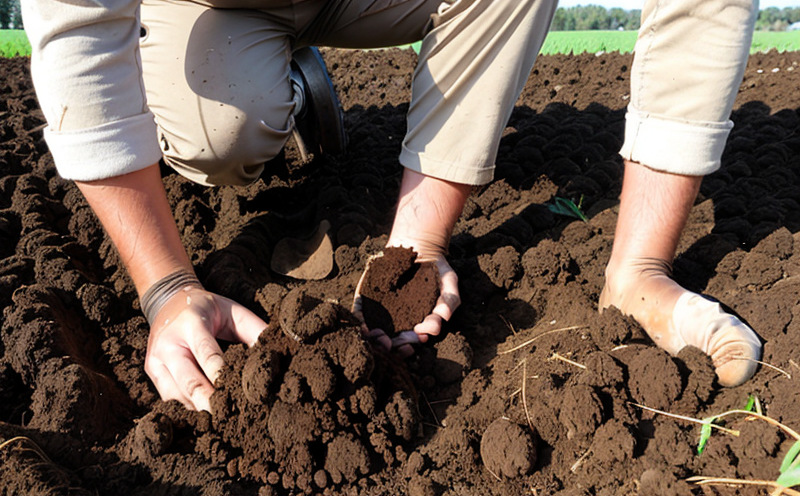Soil Texture Analysis (Sand, Silt, Clay)
The analysis of soil texture is a fundamental aspect of agriculture and forestry testing. Soil texture refers to the relative amounts of sand, silt, and clay particles that make up the soil. Understanding these proportions is crucial for optimizing crop productivity, managing water resources, and ensuring sustainable land use.
Soil texture affects several critical properties including porosity, permeability, nutrient retention, and aeration. These factors directly influence plant growth, root development, and overall soil health. For instance, sandy soils drain quickly but retain fewer nutrients, while clayey soils tend to have higher water-holding capacity but can become compacted easily.
Accurate soil texture analysis is essential for precision agriculture and sustainable land management practices. It helps in selecting appropriate crops based on the soil's ability to support root systems and manage moisture. Additionally, it supports the development of effective irrigation strategies and nutrient application methods.
The process begins with collecting representative soil samples from various depths within a field or forested area. Proper sample collection ensures that the analysis reflects the true characteristics of the soil in question. Once collected, the samples are air-dried and sieved to separate particles into distinct size fractions corresponding to sand, silt, and clay.
Various instruments can be used for this purpose, including hydrometer methods, pipette methods, or electrical conductivity sensors. Each method has its advantages and limitations, but they all aim to provide a quantitative assessment of the soil's particle composition. The results are then used to classify the soil into different textural classes based on their percentage composition.
The accuracy of these analyses is paramount for decision-making processes in agriculture and forestry. For example, if a field is found to have high clay content, it might be necessary to implement drainage systems or add organic matter to improve water movement. Conversely, if sand dominates the soil type, amendments may be required to enhance nutrient retention.
Standardization of these tests ensures consistency across different laboratories and regions, which is vital for comparing results and implementing effective management practices. This standardization is achieved through adherence to internationally recognized standards such as ISO 17240-3:2018 which specifies methods for determining the particle size distribution (PSD) of soils.
Applied Standards
| Standard Number | Description | Methodology |
|---|---|---|
| ISO 17240-3:2018 | Determination of the particle size distribution (PSD) of soils - Part 3: Pipette method | The pipette method involves separating soil particles by size using a series of sieves. Each fraction is then dried and weighed to determine its percentage composition. |
| ASTM D2487-19 | Determination of particle-size distribution (classification) of fine mineral earth materials | This standard outlines the use of hydrometer methods to measure the specific gravity of soil particles and thereby calculate their size. |
| EN 12683:2009 | Determination of particle-size distribution (PSD) of soils - Particles smaller than 75 µm | This standard is particularly useful for analyzing fine soil fractions, providing a detailed breakdown that can be crucial for precise agricultural planning. |
Industry Applications
- Agriculture: Tailoring crop selection and fertilization strategies to match the soil's texture for optimal yield.
- Forestry: Ensuring proper forest management practices that consider the soil's drainage capabilities and nutrient retention.
- Environmental Science: Studying how changes in soil texture impact ecosystems and biodiversity.
- Sustainable Land Use Planning: Informing decisions on land use that minimize erosion risks and promote ecological balance.
Customer Impact and Satisfaction
The precision of soil texture analysis significantly impacts customer satisfaction by ensuring that agricultural practices are optimized for the specific characteristics of the soil. This leads to higher crop yields, better resource utilization, and sustainable land management.
Our clients have reported increased confidence in their decisions regarding soil amendments, irrigation strategies, and crop selection. By leveraging accurate soil texture data, they can achieve more consistent and predictable results, which is especially important for large-scale farming operations or those operating in diverse geographical regions.





